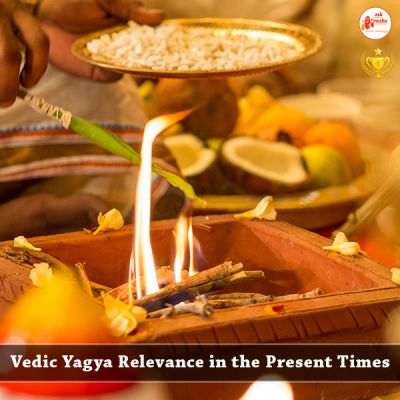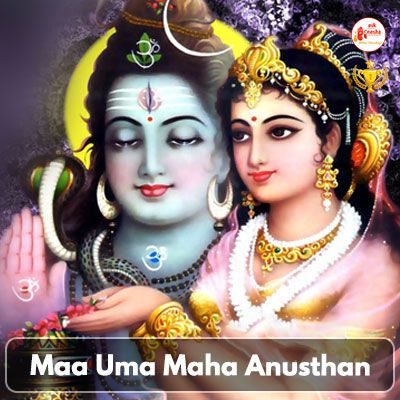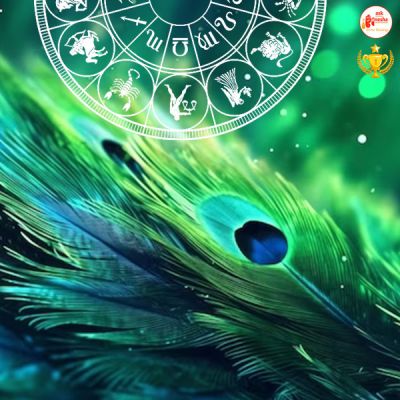Lord Krishna, in Srimad Bhagavad Gita, declared that
“I am the Yajna-Purusha.”
“I am Vedic ritual, I am the sacrifice, oblation, medicinal herb, Vedic mantra, I am also pure butter, fire, and I am the act of offering, I am the father of this Universe, also mother the sustainer, I am the grandsire or ancestor, the goal of knowledge, the purifier, the sacred syllable Om, I am the rig Veda, Sama Veda, the Yajur Veda and also Atharvaveda.” In this Blog we will let you know about the Vedic Yagya relevance in the present time.
Yagya with Vedic rituals
Yagya or ‘Yajna’ as per our Vedic text means “sacrifice, devotion, worship, or offering”. The term Yajna is derived from the word ‘Yaj’ which has three main components Agni (fire), Soma (the most relished food), and Vayu (Air) the carrier of Soma into Agni. The ritual is always performed in front of the Sacred Fire in havan Kund with the Mantra Chants. To understand the Yagya significance you need to get to the deeper meaning of these components including the Sacred Fire of Havan Kund.
Agni
It indicates the Agni God residing within us, the fire element that builds our willpower to proceed in life. Implies a high-powered inner flame or a desire and the purpose of life. The Agni or Sacred fire in the Havan Kund helps to acquire what you desire most by igniting the Willpower within you. Connecting the two your purpose and the Agni, at the time of Yajna strengthens your determination to achieve the sole purpose of your life.
In fact, when you continuously look at the fire or Agni for a longer time, it balances the Solar Plexus or Manipura chakra. This, in turn, builds a strong sense of purpose and confidence, as this chakra is responsible for the self-confidence, self-esteem, and willpower of an individual.
Soma
You must have heard or read about Samaras or Soma which Gods drink for immortality. Soma is also associated with the moon in the late Rigveda and Middle Vedic periods. In Bhagwad Gita it is mentioned as a Juice that gives pleasure.
“Those who are inclined to the fruitful activity described in the Vedas worship Me through ritualistic sacrifices. Being purified from sin by drinking the Soma juice, which is the remnant of the yajñas, they seek to go to heaven. Under their pious deeds, they go to the abode of Indra, the king of heaven, and enjoy the pleasures of the celestial gods.”
The food items which we offer during Yajna to Agni represent all the pleasures of life. We offer the pleasures which keep us in trivial conditions and thus increase the willpower to elevate our consciousness to a higher state.
Vayu
Air or Vayu, beyond its name, represents our Pranic Vayu or Cosmic Prana which sustains this Universe. Bhagavad Gita has cited that there are eight components in the Cosmos:
Earth, water, fire, air, space, mind, intellect, and ego all these eight components are my division of material energy. Vayu is one of the components of your existence. And in Yagya, Vayu is the Cosmic power that carries the Soma to the Agni. In our Vedas, it is upheld as a good companion of Agni. Vayu helps to take your message to the cosmic person or the deity of your choice.
Havan Kund
The most important step of Yajna. It is the place where all the offerings are made. It represents or symbolises the process where the purpose of an individual gets activated and connect with cosmic willingness. And all his lower pleasures are sacrificed into the Agni only to rise to a higher level of consciousness.
Yagya performance
Scientifically it is proved that the person who performs Yagya goes into the Alpha brainwave state and has higher levels of creativity. It raises your awareness, the most important factor to achieve success. One experiences deeper relaxation, syncs body and mind, increases awareness and enhances creativity & immunity.
Along with offering Somas or pleasures of life (which push you to lower mental standards), many Vedic mantras are chanted in the Yagya. The Vayu element of your body and the universe aids in making these offerings to Agni in the Havan Kund. The process raises your vital energies and positivity in the environment around you. It helps an individual connect to the deity or cosmic person for spiritual upliftment.
Most Yagyas offer Ahuti to Agni for pleasing Lord Indra
Lord Indra is considered the bridge between all the Gods and Mortal beings. He is the King of Gods or Devtas and rules the heaven known as Amaravati. He is upheld as the God of lightning, thunder and rainfall. And thereby, is responsible for the cycle of seasons responsible for life on earth or Bhulok. Lord Indra the head of God, gives sufficient rain and any imbalance will challenge survival on Earth. He is the spiritual Guru or advisor for those who perform Yagya or penance and elevates them on the path of Supreme authority. While performing Yagya besides Indra, Vayu and Agni many other Gods are pleased through Mantras.
Likewise, Lord Indra ‘Yama the God of death is also offered oblation in Yagya. As per our Hindu text Upanishads, Lord Yama had taught about Yagyas to Nachiketa who was one of the first learners or seekers during Vedic times. Our epic Mahabharata and Ramayana have cited Yagya innumerable times. In ancient times it was mainly performed by kings and emperors.
Dushyanta, son of Bharata, completed 100 Ashvamedha Yagyas, In this, a horse is sent outside the kingdom as representative of the king. And whoever captures the horse had to fight with the king. If defeated in the war or pay tributes to the king they were left unharmed. We all know Lord Rama had also performed Ashvamedha Yagyas which was captured by Lava-Kush. Many more Yagya was observed in olden times like the epic Ramayana or Ramcharitmanans King Dasharatha had performed a Putreshti yajna to seek blessings to beget children. Lord Rama performed Rajasooya Yagya in Ayodhya after destroying Ravana. The demon king Ravana, who had immense knowledge and expertise in Yagya executed a Yagya for Rama. In Mahabharata, Yudhisthira had done Ajasuyam Yagya to re-establish his sovereignty.
There are atleast 500 types of Yagya in the Vedas
Few Types of Yagyas
Maha Ganapathy Yagya
Performed to seek the blessings of Lord Ganesh. He is the god of success and wisdom. In Maha Ganapathy Yagya Lord Ganpati is invoked with various Mantra chants, rituals and with Aahutis or offerings. Ganapati Yagya or Ganpati Homam brings prosperity, happiness, health and wealth in life. And most importantly removes any unforeseen obstacles in personal and professional life.
Sudarshan Yagya
This Yagya is carried to destroy evil spirits and any sort of trouble from enemies. This is amongst the most powerful Yagyas, it removes negative energies around ‘Yogyakarta’ or the Yagya performer. Done on Ekadashi, Dwadasi and Poornima days. Sometimes it is performed to get rid of a specific enemy troubling in life.
Navagraha Yagya
This is performed to reduce the malefic effects of the planets and to pacify the Nine planets. It is usually recommended before the start of any auspicious occasion. Especially after the inauguration of new buildings, new houses or any new beginning in life. The 9 Planets: Sun, Moon, Mercury, Mars, Venus, Jupiter, Saturn, Rahu and Ketu are worshipped following the Vedic rituals.
Maha Mrityunjaya Yagya
This Yagya Mantra is devoted to Lord Shiva and was created by Rishi Markandeya at the time when Lord Yama had come to take his life. When Yama came he was engrossed in his prayers to Lord Shiva.
||Om Tryambakam Yajamahe Sugandhim
Pushti-Vardhanam Urvarukamiva bandhanan Mrityor Mukshiya Mamritat||
This Mahamrityunjaya Mantra from the Rudram of Yajur Veda is repeated for longevity. It is extremely beneficial to repel death fear in the horoscope and for the elimination of disease & sins.
Vasthu Yagya
It is done before moving into your new home or construction of a new building. To remove the obstacles while constructing the building or any negativities around the new home.
Sri Sukta Yagya
This Yagya is performed of Beejyukta Sri Suktam with cow ghee and Kamalghatta. Sri Suktam Vedic hymns are sung to get the blessings of Mahalakshmi, the Goddess of wealth. It is believed this Yagya will fetch an abundance of money, a wealthy lifestyle, profits, and attract more customers.
Benefits of Yagya
Yagya is “Yajóoaya Sarvakamdhuk” which implies “Source of fulfilling all desires”. Yagya benefits us at all levels, physical, mental and spiritual. Purifies surrounding air and infuses positive vibration. In Vedic text, it says that performing Yagya increases the Sattva gun which symbolises cleanliness, peace and purity.
While performing Yagya the two energies Heat and Sound emanate from the Yagya’s fire and Vedic Mantras chanting. These two reverberating energy in the air empowers our willpower to achieve the desired goals. Besides it also has an impacting Physical, Mental and Spiritual benefits as well. Recent research studies have shown the therapeutic potential of Yagya. The herbal offering that is made to the holy fire in the havan Kund emits fumes that have medicinal properties. These fumes not only reduces bacteria and air pollutants but also aid in curing various diseases like cancer, diabetes and mental disorder.
The four Vedas have clearly stated the significance of Yagya. The Atharvaveda Shloka tells about the Mantra chanting influence on the physical, emotional, and spiritual balance of a person. Samveda states that the mantra chanting and Yagya takes one through the high energy cosmic radiation and connects to the Supreme power in the Universe. Samaveda has a collection of important teachings and Shlokas or Verses.
Agnir Vrittraani Janghanad (Verse 4)
Agni (fire) destroys the demons (Vritras)
Here Agni implies ‘knowledge’ and Vrittas darkness of ignorance. “Just as Agni destroys the darkness, in the same manner, we should use 'the fire of knowledge' for the destruction of Kama (lust), Krodh (anger), Moha (attachments) and Ahamkara (arrogance) – the five inherent enemies of man.
Yajurveda has all the methods and rules of performing Yagya. Yajur Veda is formed with two words Yajush and Veda. Yajush is from Yajna (discussed above) or Yagya so Yajurveda is the Veda or book of rules for different kinds of Yagyas. And Lastly, Rig Veda Yajna is an extremely auspicious Yagya, performed to sweep off all sins of the present and previous life and for spiritual upliftment.
Therefore Yagya should be done only by an expert as it requires immense knowledge of Vedic rituals and mantras. You can trust Askganesha's years of Experience, Qualification and Proficiency in performing all forms of Yagya.























 Translate
Translate